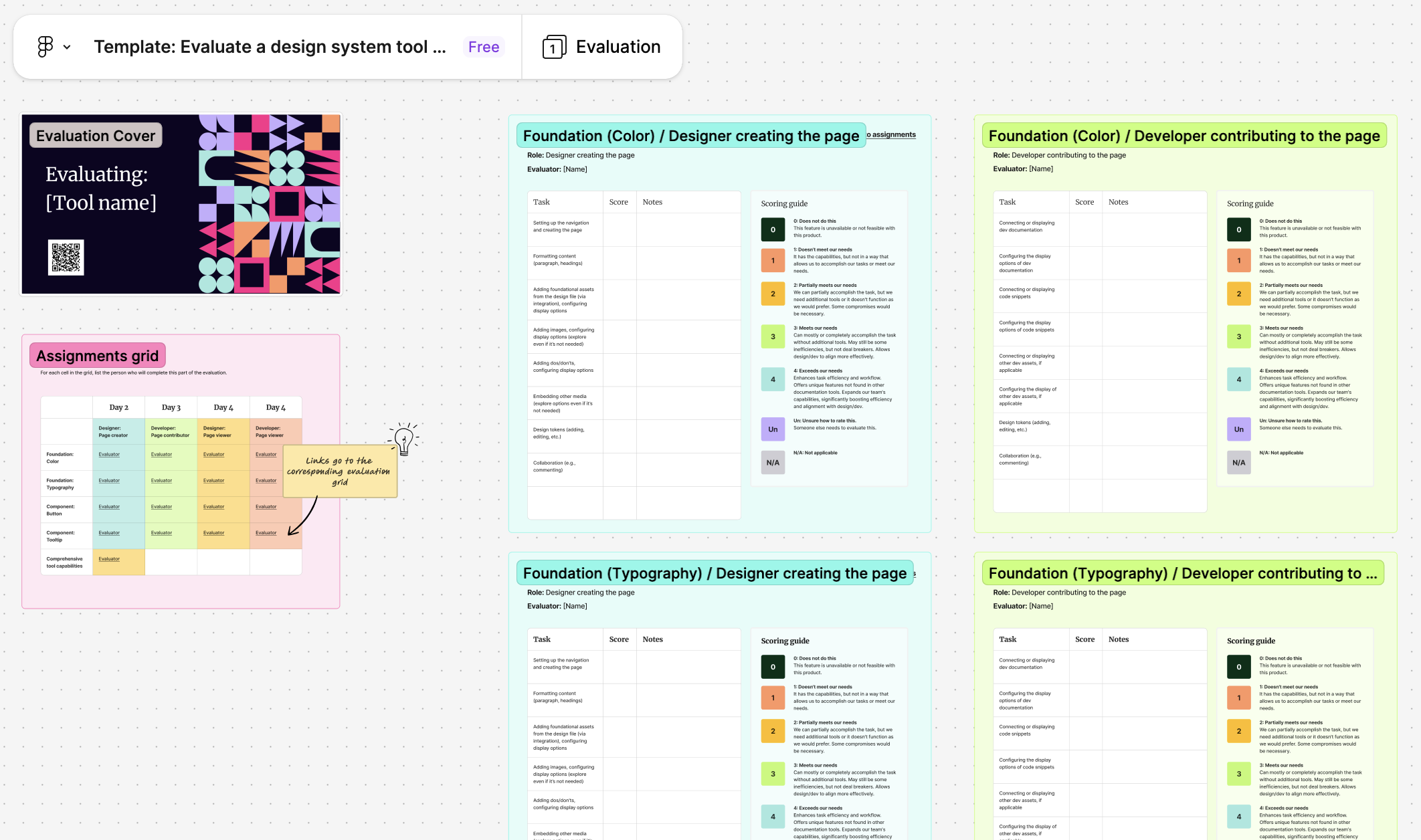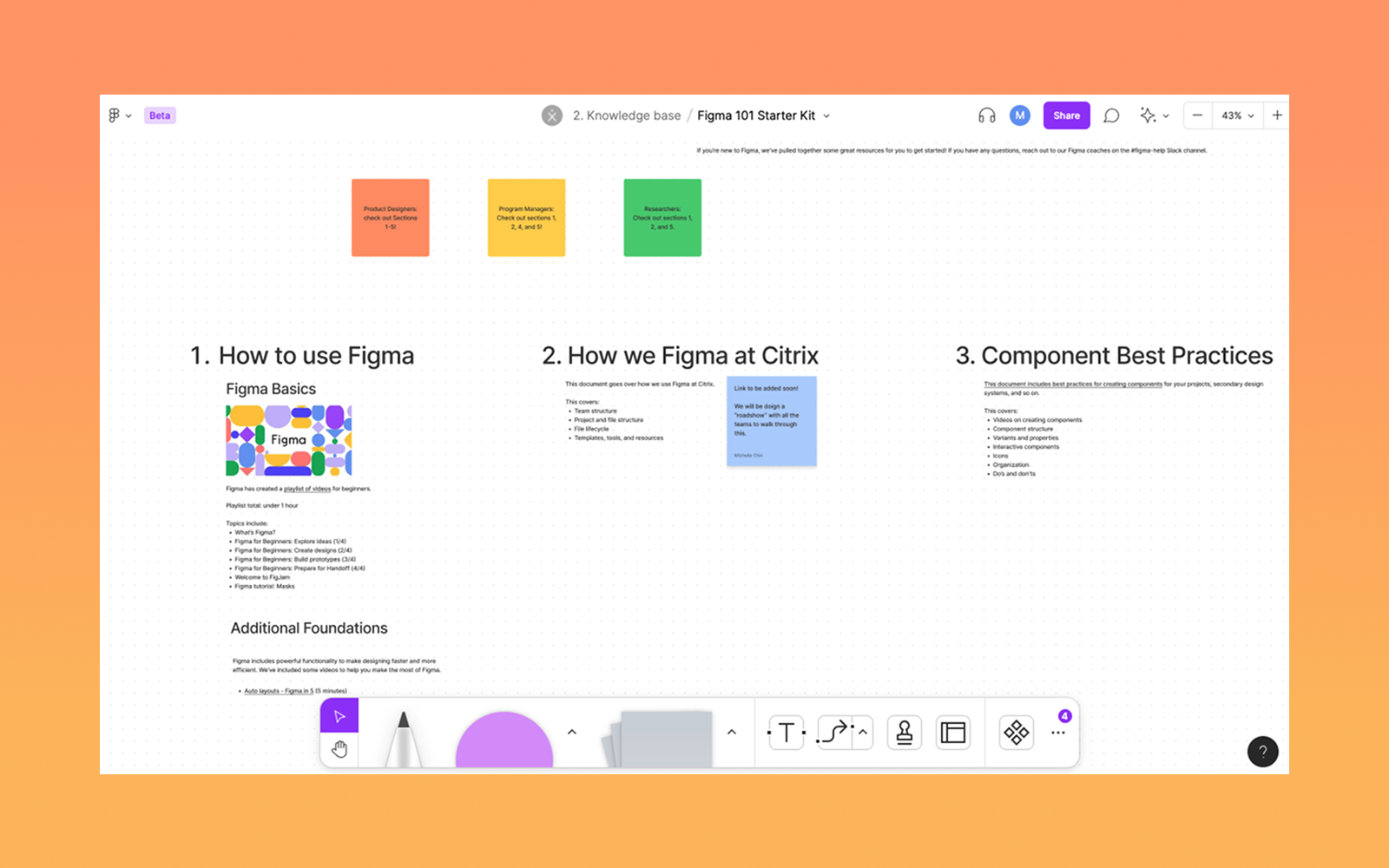Tooling operations aren’t just about choosing tools and buying licenses. There’s an entire lifecycle that involves:
- Evaluating tools
- Sunsetting old tools
- Adopting new ones
When an org like ours was busy and under-resourced, spending time to do our due diligence for this lifecycle seemed impossible. We reached a critical mass of pain points that required us to address finding new tools. Pressured by the timing of subscription renewals, I started figuring out ways to evolve our toolset quickly and efficiently—and in a way that would be repeatable. Here’s how I addressed each phase of the lifecycle.
🔍 Evaluating tools
How do you choose your next tool without regrets? Our team was a little guilty of this before, and we learned how difficult it can be to replace a bad tool with a better one. To avoid becoming bedazzled by a new, shiny tool, I created a tool evaluation process and a Miro template to collect feedback thoroughly yet efficiently.
It worked well for us—we felt confident in our decision, and we had concrete information to share with stakeholders. In 2024, I reworked this into a free guide and templates, Evaluate a design system tool in five days!

😴 Sunsetting tools and archiving artifacts
As a large design organization at an enterprise company, we had years of work stored in cloud-based tools. Changing tools wasn’t as easy as flipping a switch. We needed a transition process that could:
- Work at scale to support 60+ team members
- Ensure compliance with our intellectual property and data retention policies
- Avoid disrupting any in-progress work
I developed and facilitated a process for sunsetting tools and ensuring that we archived our work efficiently and accurately. In less than a year, we sunset three major tools, which gave us plenty of opportunity to iterate and improve the process. For example, I advocated for hiring a contractor to migrate our work. Not only did this relieve our designers of the tedious work so they could focus on their projects, but it also provided a cost-effective solution.
🎁 Adopting new tools
Getting teammates comfortable using the new tools is crucial to the team’s success. (How valuable is Figma if you don’t know how to use components?)
Overall, the team was excited about getting Figma, but a few teammates were hesitant to adopt it. After speaking with a few people, I learned their hesitation was around finding time to learn something new while working on demanding projects. Some people even mentioned that they didn’t have time on evenings and weekends to learn. It wasn’t ever our intention that they use personal time to ramp up. However, we also never openly articulated any expectations for learning new tools.
At the time, Figma worked differently than other design tools, so there was a learning curve with it—and there was an overwhelming amount of tutorial information. To help teammates adopt Figma, I created a two-part plan.
- Part 1: Curate how-to content into a playbook. I asked a few designers who were part of the Figma trial to pull together the best articles, tutorials, and videos to get our teammates ramped up.
- Part 2: Advocate for learning and development time. I worked with the design management team to secure some time during our Innovation and Planning sprint. This time was usually set aside for hack week projects and quarterly planning. While this meant skipping out on doing fun projects, it provided dedicated time during work to level up their skills.

🤩 Impact of tooling operations
By just being at an enterprise company with a large design org, evolving our tool set often felt like a real slog. However, by establishing the processes to evaluate, sunset, and adopt tools, we were able to reduce quite a bit of that grind. Some successes include:
- Confidence in choosing the tool that accurately met our needs
- Reducing tool transition costs by hiring a contractor
- Ensuring adoption by providing learning and development time
- Boosting team morale—our teammates felt valued and appreciated because we created a space for them to level up their skills and protect their work/life balance.